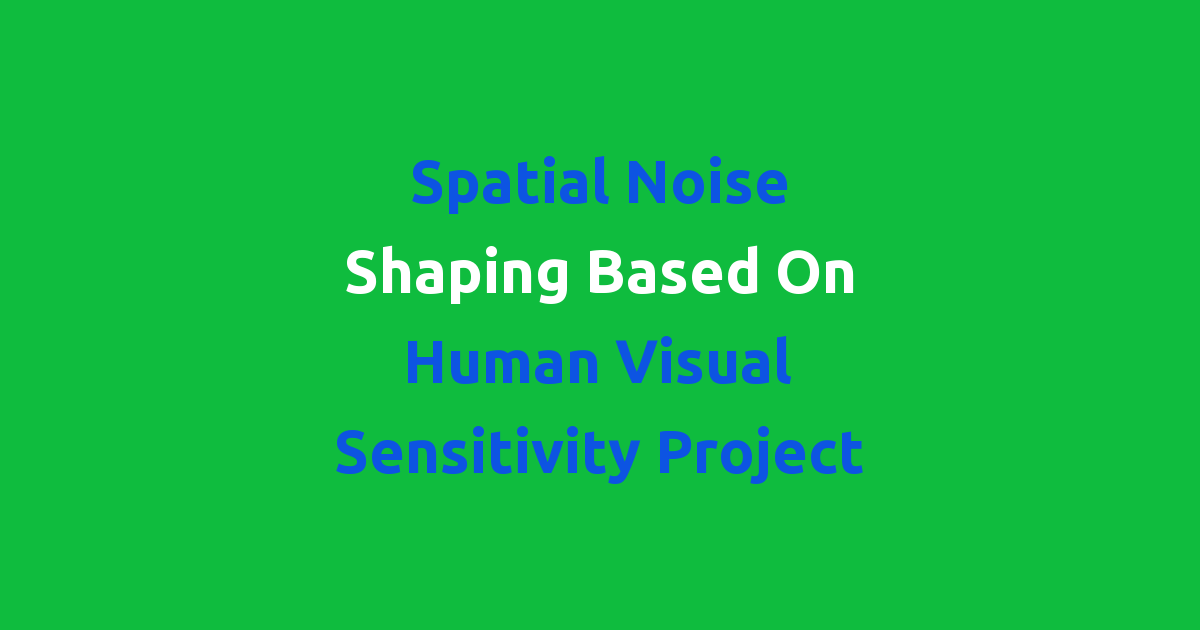Project focusing on spatial noise shaping using insights from human visual sensitivity.
Introduction
In the field of engineering, especially in the domain of image processing, the reduction of spatial noise plays a critical role in enhancing the overall quality of images. Spatial noise refers to the irregular variations in pixel values that can degrade the visual quality of images. In this project, we aim to develop a spatial noise shaping technique based on human visual sensitivity to effectively reduce noise in images.
Problem Statement
The existing spatial noise reduction techniques often lack the ability to effectively preserve the important details in images while reducing noise. This results in a trade-off between noise reduction and image quality. Moreover, the mechanisms used in these techniques do not take into consideration the human visual system, which plays a crucial role in determining the perceptual quality of images. Therefore, there is a need for a novel approach that considers human visual sensitivity in spatial noise shaping.
Existing System
The existing spatial noise reduction techniques primarily rely on algorithms such as median filtering, Gaussian filtering, and wavelet denoising. While these techniques are effective in reducing noise, they often result in the loss of important image details. Additionally, these techniques do not account for the characteristics of human visual sensitivity, leading to suboptimal results in terms of perceptual image quality.
Disadvantages
Some of the disadvantages of the existing spatial noise reduction techniques include:
- Loss of important image details
- Suboptimal perceptual image quality
- Inability to account for human visual sensitivity
Proposed System
Our proposed system will leverage the characteristics of human visual sensitivity to develop a spatial noise shaping technique that effectively reduces noise while preserving important image details. By analyzing the human visual system’s response to noise, we aim to optimize the noise reduction process to maximize perceptual image quality.
Advantages
Some of the advantages of our proposed spatial noise shaping technique based on human visual sensitivity include:
- Enhanced perceptual image quality
- Preservation of important image details
- Optimized noise reduction process
Features
Our proposed system will incorporate the following key features:
- Human visual sensitivity analysis
- Optimized noise reduction algorithms
- Perceptual image quality enhancement
Conclusion
In conclusion, the development of a spatial noise shaping technique based on human visual sensitivity holds great potential in revolutionizing the field of image processing. By considering the characteristics of the human visual system, our proposed system aims to address the limitations of existing spatial noise reduction techniques and deliver superior perceptual image quality. Through this project, we aim to contribute towards advancing the state-of-the-art in spatial noise reduction and enhancing the visual experience for users.

